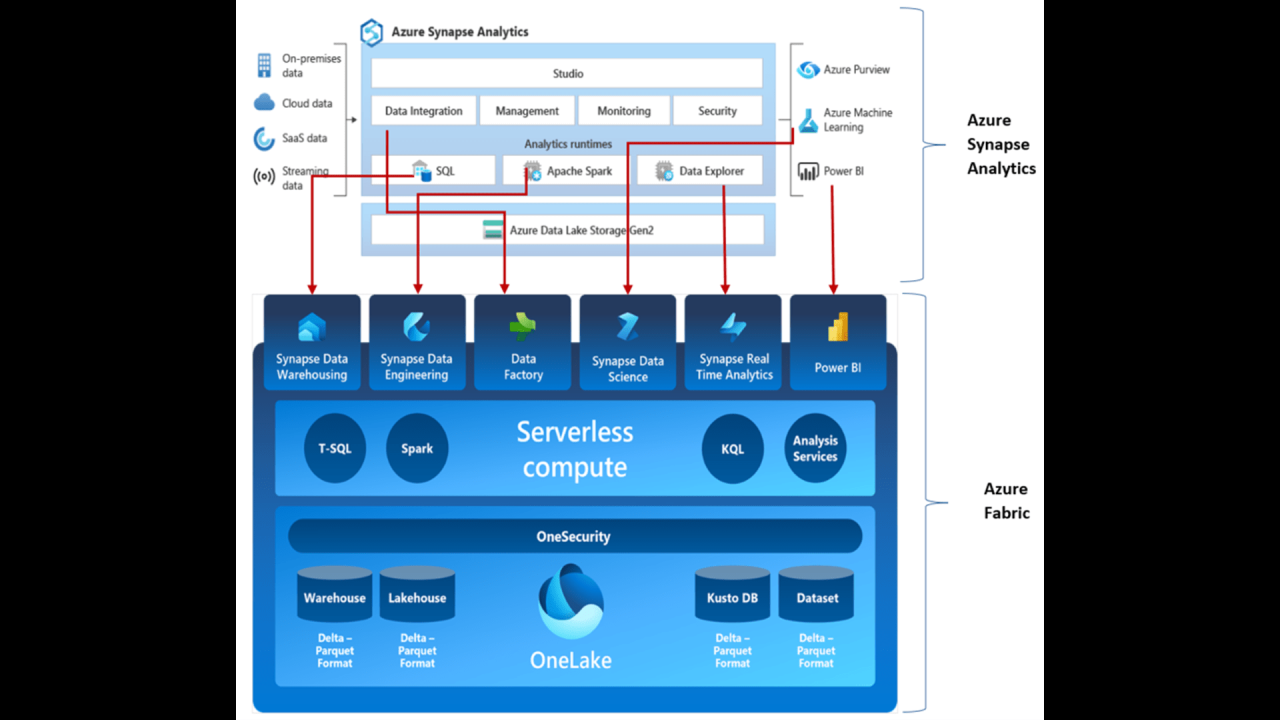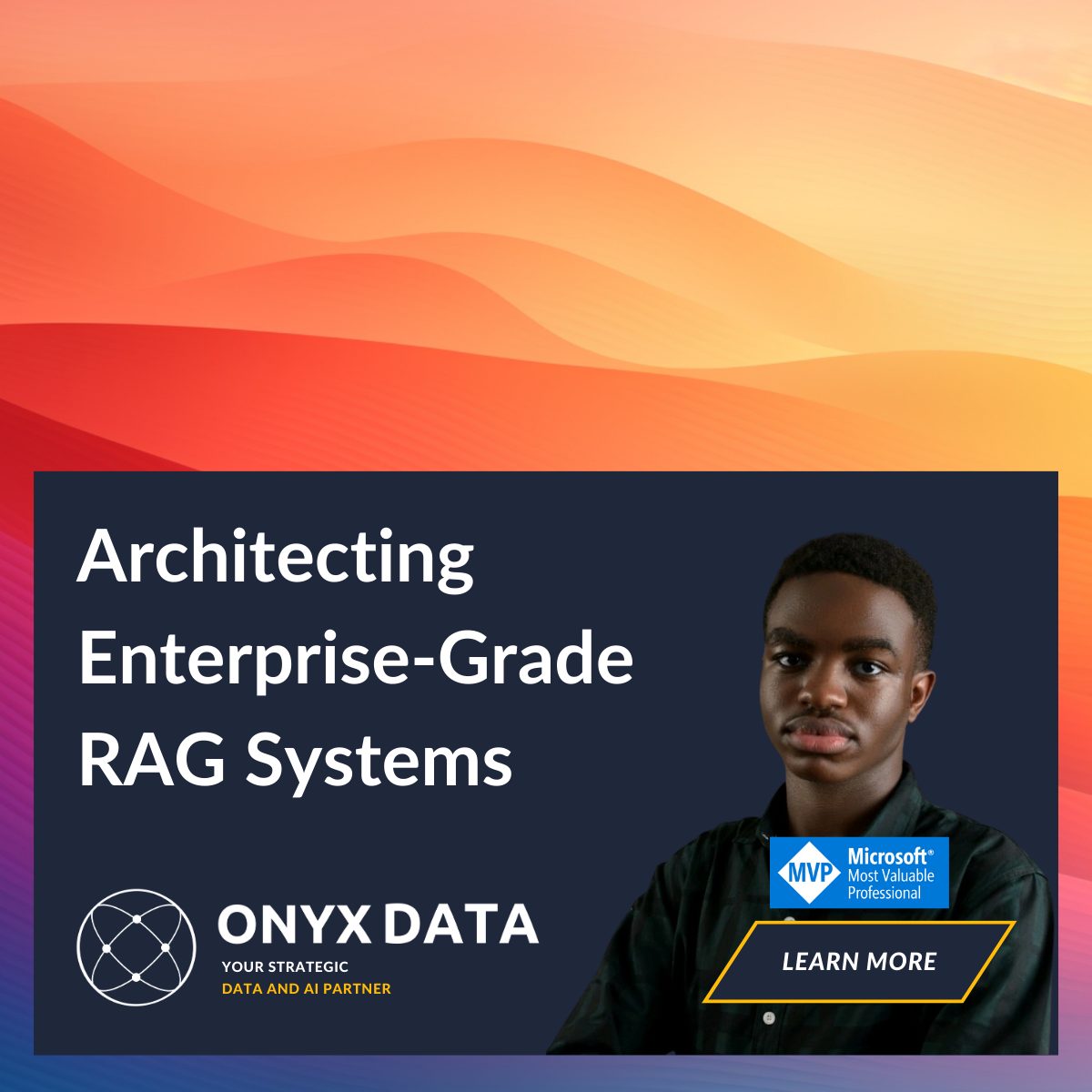Comparing Microsoft Fabric vs Synapse – Which Platform is Right for You?
When choosing between Microsoft Fabric and Azure Synapse Analytics, the impact on your business’s data strategy can be crucial. Both offer powerful solutions for data management and analytics. However, their differences may make one more suitable for your needs. Your decision should be based on your business requirements and use cases.
The necessity for seamless integration, scalability, and rapid insights is more important than ever. Microsoft Fabric excels in flexibility for data storage and management. Meanwhile, Azure Synapse offers superior capabilities for advanced analytics and data integration.
This post will explore the main differences, architectures, and features of both platforms. A detailed feature comparison will provide insights into their capabilities in data storage, management, and integration. Understanding these distinctions is vital for successfully migrating workloads or starting new projects, helping you fully harness the power of data.
Microsoft Fabric vs. Azure Synapse: Key Differences
Choosing between Microsoft Fabric and Azure Synapse Analytics requires understanding their main differences, essential for aligning with your business needs. Microsoft Fabric is a SaaS platform that combines various analytics tasks into a single, easy-to-use interface, simplifying management for users. Its strength lies in seamlessly supporting different workloads.
Azure Synapse Analytics, on the other hand, is a PaaS solution targeting enterprise-level data warehousing, ideal for advanced analytics. It focuses more on infrastructure, offering enterprises the ability to extensively customise their analytics operations.
The main difference between the platforms is their architecture and data storage. Microsoft Fabric uses a lake-centric model called OneLake for centralised data management, reducing redundancy and speeding up access to insights. OneLake enhances integration and enables smooth analytics across various sources.
Conversely, Azure Synapse employs Azure Data Lake Storage Gen2 (ADLS Gen2), known for strong storage capabilities but needing more setup and upkeep effort. ADLS Gen2 enhances performance and cost-efficiency for large datasets with its hierarchical structure.
Your choice between the two depends on whether you prioritise integration simplicity or infrastructure control. The next section covers more details on architecture and features that set these platforms apart.
Architecture and Features: A Quick Guide
Choosing between Microsoft Fabric and Azure Synapse Analytics depends on their distinct architectures and features. Here’s a straightforward look at their capabilities for data processing and analytics.
-
Microsoft Fabric relies on OneLake, a tenant-wide data store that simplifies access and collaboration by preventing data silos. This feature supports seamless integration across various services, promoting consistent enterprise data management.
-
Azure Synapse Analytics combines Synapse Studio, SQL, and Spark within a single platform. It supports a comprehensive analytics process, effectively managing both structured and unstructured data. This setup suits businesses looking to centralise analytics in one place.
-
Microsoft Fabric operates as a Platform-as-a-Service (PaaS), enabling developers to customise and build specialised applications. Its design supports scalability and flexibility without major infrastructure investments.
-
Azure Synapse follows a Software-as-a-Service (SaaS) model, prioritising ease of use and rapid solutions. This setup is ideal for organisations seeking swift analytics without dealing with infrastructure complexities.
Recognising each platform’s data architecture highlights their best features based on your needs. Microsoft Fabric benefits organisations focused on unified data access and team collaboration, while Azure Synapse’s integrated tools provide extensive options for large-scale analytics.
Next, we’ll compare these platforms feature by feature, examining how their architectures influence capabilities and what they mean for your data.
Feature Comparison: Microsoft Fabric vs. Azure Synapse
Understanding the differences between Microsoft Fabric and Azure Synapse is key. Both platforms offer excellent features, but certain aspects might make one a better fit for your business requirements.
-
Data Storage: Microsoft Fabric uses open-standard formats for flexibility and easy integration. Azure Synapse relies on traditional warehousing formats for structured analytics.
-
Collaboration Tools: Microsoft Fabric excels in real-time collaboration on data models and reports. Azure Synapse focuses on individual contributions through Synapse Studio’s comprehensive toolkit.
-
SQL and Machine Learning: Both offer strong SQL capabilities. However, Microsoft Fabric has pre-configured environments that simplify machine learning workflows, supporting diverse data models with minimal setup.
-
Data Activation: Microsoft Fabric integrates in real-time with cloud systems, activating data dynamically. Azure Synapse focuses on transforming big data into insights suitable for analytics and reporting.
-
Integration Tools: Azure Synapse Links to Cosmos DB for low-latency real-time data access. Microsoft Fabric uses Power Query for simple data processing and transformation accessible to all users.
Experts like Onyx Data guide businesses in leveraging Microsoft technologies for tailored solutions that meet company needs and goals.
Next, we will explore the challenges and key considerations for migrating workloads, offering clear steps for businesses looking to modernise their analytics setup efficiently.
Migrating Workloads: Key Challenges and Considerations
When moving operations from Azure Synapse Analytics to Microsoft Fabric, understanding migration intricacies is vital. Transitioning can be complex due to the architectural differences between these platforms. While Azure Synapse merges big data and warehousing capabilities, Microsoft Fabric is a more integrated SaaS model. This shift offers both challenges and opportunities for growth and efficiency.
A major challenge in migrating workloads is converting SQL scripts. Azure Synapse’s SQL features may not align perfectly with Microsoft Fabric’s environment, potentially making some T-SQL commands incompatible. Identifying unsupported commands and finding alternatives can complicate and extend migration time.
Adapting to Microsoft Fabric’s SaaS model often requires rethinking data workflows. Fabric’s cloud-native services integrate smoothly within the Microsoft ecosystem, demanding an adjustment to new procedures and tools. While this change may initially hinder processes, the overall efficiency gains make it worthwhile.
Onyx Data supports these transitions. By transforming data into tangible insights, Onyx Data employs advanced migration strategies to ease the shift. Their expertise is critical as industries face migration challenges while aiming to leverage new system opportunities.
Considering these migration factors helps businesses anticipate disruptions and plan strategically. Data storage, management, and integration, crucially linked to migration, can boost productivity with effective architectural and management strategies.
Data Storage, Management, and Integration
In data analytics, choosing between Microsoft Fabric and Azure Synapse depends on their data storage and integration methods, each offering unique strengths for businesses.
Microsoft Fabric introduces OneLake, a unified storage system that centralises data access. It eliminates data silos and fosters teamwork by providing a single source of truth, ideal for companies prioritising seamless integration in their analytics.
Conversely, Azure Synapse Analytics utilizes Azure Data Lake Storage Gen2, excelling with its ability to handle structured and unstructured data. Its elasticity allows businesses to scale storage quickly, meeting the demands of data-heavy operations.
Despite their different methods, both platforms tackle modern data storage challenges effectively. Microsoft Fabric’s OneLake focuses on easy integration, while Azure Synapse offers scalable solutions for managing vast data volumes.
As decision-makers evaluate these platforms, understanding their functions in practical settings offers insights for future applications in various industries. Next, we’ll look into Use Cases and Industry Applications to see how these platforms perform in different sectors.
Use Cases and Industry Applications
Microsoft Fabric and Azure Synapse Analytics offer powerful solutions for various industries within the cloud data space. Recognising their uses helps businesses select the right platform for their needs.
-
Microsoft Fabric for real-time analytics: Ideal for industries needing fast insights, such as retail, finance, and telecom. It excels in processing real-time data, improving efficiencies with live data visualisation and quick reporting.
-
Azure Synapse for complex analytics: Suitable for handling big data in healthcare, manufacturing, and logistics. It manages large datasets with advanced analytics and machine learning tools, aiding in predictive modeling and strategic forecasts.
-
Integration and performance insights: Both platforms enhance performance by integrating seamlessly with existing data systems. Fabric focuses on speed, while Synapse offers detailed business intelligence.
Choosing between Microsoft Fabric and Azure Synapse depends on data needs and task complexity. Understanding their strengths leads to better strategic choices and innovation.
Conclusion
Selecting between Microsoft Fabric and Azure Synapse Analytics can be challenging due to their unique benefits. Each platform serves different data and analytics needs. Microsoft’s Fabric is excellent for those well-integrated into the Microsoft environment, offering a streamlined ecosystem for data management and smooth operations.
On the other hand, Azure Synapse Analytics is perfect for complex data warehousing with its scalability and flexibility. It excels in handling large-scale data migrations and integrations, making it ideal for massive data projects. While both offer substantial data storage, Synapse leads with deep analytical capabilities.
Your decision should focus on your business goals and tech stack. Consider: Do you need a tightly integrated ecosystem or expansive analytics? Both platforms promise significant advancements in data management. Align your choice with your current and future data needs to enhance your data strategy and stay at the cutting edge of digital innovation.
Evaluate your data requirements and how each platform meets your objectives for the best results in data strategy.
About Onyx Data
Onyx Data is a consulting and training powerhouse dedicated to unlocking the full potential of advanced data analytics and AI integration, leveraging the robust capabilities of Microsoft technologies like Power BI and Microsoft Fabric.
Our innovative solutions empower enterprises to transform data into actionable insights, dramatically enhancing performance and decision-making while addressing industry-specific needs.
Transform your data strategy today and witness significant growth—explore our services at Onyx Data.







